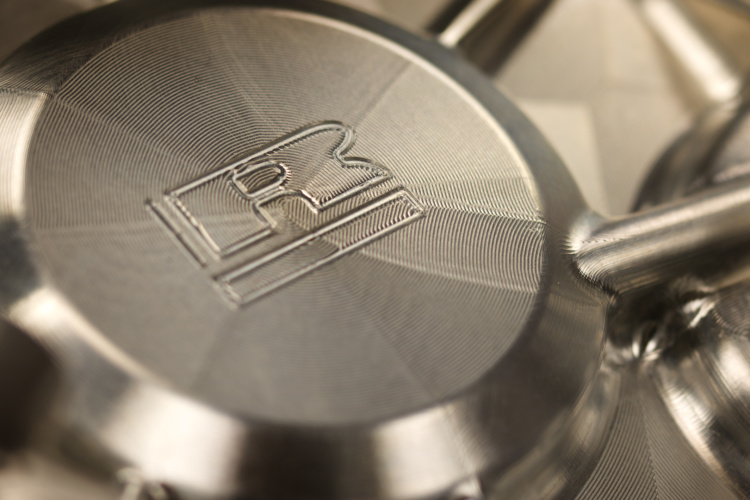 Pete Griffiths, Market Head Aerospace at Ricardo Performance Products, sets out the challenges and opportunities for the aviation sector in the wake of the global pandemic.
Pete Griffiths, Market Head Aerospace at Ricardo Performance Products, sets out the challenges and opportunities for the aviation sector in the wake of the global pandemic.
The aviation industry is facing the biggest challenge in its history. Commentators have identified that despite this, the industry does have an unprecedented opportunity to ‘bounce back greener’. However, for a sector that in its early years developed innovative technology at pace, the aviation industry today faces significant challenges industrialising innovation and introducing new products.
More from Industrialising Innovation Week
Aerospace original equipment manufacturers face three key challenges. First, many engineering companies are unable to manufacture components with the tight tolerances required for use in airframes or engines: the investments required in inspection and quality procedures to meet the requirements of the aerospace industry are significant. In addition, there is the difficulty of managing the complex, multi-layered, lengthy supply chains which are needed to make aerospace parts, modules, engines or aircraft. This means that there is a relatively small pool of capable suppliers with whom OEMs can work.

Secondly, for delivery and quality assurance reasons, supply contracts - normally called Long Term Agreements - are used by aerospace primes to secure capacity and guarantee commitment to deliver for many years: often the entire lifetime of an airframe. For example, Boeing 747 parts have been required for 50 years, and spares will be needed for decades after the last one is manufactured. These Long Term Agreements can be worth many millions of pounds, with stringent penalties for poor quality or delivery performance. The need to contract so precisely for so far into the future adds another level of complexity and therefore potential obstacles for manufacturers to overcome before any metal is cut.
Thirdly, the development of aerospace components is extremely challenging. Even after the design is complete, months of investment, development and approval are needed before manufacturing can begin.
In addition to these standard challenges, the global pandemic has brought even more complications to the sector. An almost immediate impact from the Covid-19 pandemic and its associated national lockdowns and travel restrictions was a reduction in international air travel. If people cannot travel, aircraft are not required. Consequently, aircraft operators require less fleet. This has meant delays or reductions in maintenance programmes for existing aircraft, as well as production programmes and sales of new aircraft.
The main reason that Long Term Agreements are complicated documents, which specify requirements, volumes, rewards and penalties in intricate detail - sometimes for decades - is that for each engine or aircraft hundreds of thousands of intricate components have to appear in the right place at the right time. If they do not, then aircraft cannot be delivered and a significant liability could be faced for this delay to production.
Many Long Term Agreements - which have previously been considered as documents ‘set in stone’ - have in recent months been significantly impacted as a result of the unprecedented effects of Covid-19 through a Force Majeure process. The global pandemic and its associated national lockdowns and travel restrictions was so widespread, devastating and unforeseeable that the impact is a total breakdown in demand for an entire industry. If people can’t travel, aircraft are not required: new ones are not needed, and existing ones don’t wear out.

The good news is that once national vaccination programmes are successful, and travel restrictions can be safely lifted, there is an expectation that demand will rise once again for business and personal travel – although it is expected to take several years to reach pre-pandemic levels.
Before the pandemic, the aerospace sector was enjoying an extended period of growth. When the global economy recovers from the pandemic, we expect to see a surge in demand for travel, leading to a growth rate in the sector far in excess of that previously seen. Despite many OEMs and supply chain companies being forced into dramatic workforce cuts, the supply chain must not fail completely, as an inability to supply the required components and systems could hamstring the entire sector as it seeks to kick-start manufacturing efforts in line with the increased demand.
Due to the product complexity and the need for absolute quality, the equipment and facilities that manufacture aerospace components do not lend themselves to many other industries which, for the supply chain, reduces the opportunity for protective diversification. The OEMs must ensure the supply chain is fed with enough demand to keep them active and operational, companies that have re-structured during lean times will face huge pressures to ramp up rapidly after the pandemic, to keep up with demand.
Ricardo has been the trusted engineering and manufacturing partner for the aerospace sector for over 100 years. Ricardo’s aerospace New Product Introduction process reflects a deep understanding of the challenges that the industry faces, and the solutions required to overcome them.
Flexibility in production is key. Ricardo Performance Products specialises in small-batch, high-quality components that are typically manufactured for industries such as motorsport and defence, which demand both short lead times and a flexible approach to production supply. The changes seen in aerospace are directly relatable to this: Long Term Agreements being modified, demand changing dynamically and production schedules evolving in line with varied global demand for travel.
To meet this changing demand profile, aerospace supply chains must evolve to increase flexibility and offer a dynamic approach to production scheduling to ensure supply can be delivered in line with market demand while maintaining quality and consistency.
The Ricardo approach to industrialisation supports the evolution of product from concept to series production, in a unique and highly transferable way. We apply tools and techniques typically seen in high volume production to manufacture in lower batch sizes at niche volumes. These skills are focused on three things: process - to ensure the manufacturing facility operates in a controlled and repeatable way, delivering high levels of quality throughout production; design for manufacture – to improve both the efficiency of the production output and the profitability of the product; and supply chain management – to deliver significant efficiency benefits while reducing ongoing product cost.
As the aerospace industry evolves and grows back, the ability to supply products in a dynamic and flexible way will be critical. These changes will demand the ability to ramp up production efficiently and at pace, combined with smaller batch sizes and dynamic delivery schedules - all while maintaining the highest levels of product quality and safety.
To find out how Ricardo expertise in industrialisation can be applied to your products, visit: http://ricardo.com/services/manufacturing/industrialisation or contact us: npi@ricardo.com










Water Sector Talent Exodus Could Cripple The Sector
Maybe if things are essential for the running of a country and we want to pay a fair price we should be running these utilities on a not for profit...